Green Energy Solutions - A Guide to Offshore Wind Farms
As the world grapples with the pressing need for sustainable energy solutions, offshore wind farms have emerged as a beacon of hope. These colossal structures, standing tall against the backdrop of the open sea, harness the powerful winds that sweep across our oceans, transforming them into clean, renewable energy. But what exactly are offshore wind farms, and why are they becoming increasingly vital in our transition to a greener future? In this article, we will explore the potential of offshore wind farms, delving into their benefits, challenges, and future prospects in the renewable energy landscape.
Offshore wind energy refers to the generation of electricity from wind turbines located in bodies of water, typically on the continental shelf. Unlike their onshore counterparts, which are often limited by land availability and urban development, offshore wind farms can take advantage of the stronger and more consistent winds found over the ocean. This technology involves the installation of large turbines on floating platforms or fixed structures anchored to the seabed.
The advantages of offshore wind energy are numerous. First and foremost, the wind speeds over the ocean tend to be higher and more stable, leading to greater energy production. Additionally, offshore wind farms can be placed far from shore, reducing the visual impact on coastal communities and minimizing land use conflicts. This means that while we work towards a sustainable energy future, we can also preserve our precious land for agriculture, recreation, and urban development.
Offshore wind farms offer a myriad of benefits that make them an attractive option for renewable energy generation. One of the most significant advantages is their potential to reduce greenhouse gas emissions. By harnessing wind energy, we can decrease our reliance on fossil fuels, which are a major contributor to climate change. The transition to renewable energy sources like offshore wind is crucial in our fight against global warming.
When we consider the environmental impact of offshore wind farms, the positives far outweigh the negatives. These farms play a crucial role in reducing carbon emissions, which is essential for combating climate change. Moreover, they can help preserve marine ecosystems by providing artificial reefs that promote marine life. However, it is vital to approach the development of these farms with care, ensuring that we do not disrupt the delicate balance of marine habitats.
One of the major concerns surrounding offshore wind farms is their impact on marine wildlife. The construction and operation of these facilities can potentially affect local ecosystems. For instance, the noise generated during construction may disturb marine animals, particularly those that rely on sound for communication and navigation. To mitigate these concerns, developers are implementing strategies such as conducting thorough environmental assessments and using noise-reducing technologies during construction.
While the aesthetic impact of offshore wind farms is generally less contentious than onshore installations, there are still concerns regarding noise pollution. The sound of wind turbines can be heard from nearby coastal areas, raising questions about the visual and auditory experience of residents. Addressing these concerns is crucial for gaining public support. Solutions may include strategic placement of turbines and employing designs that minimize noise.
When evaluating the economic viability of offshore wind farms, it's essential to consider several factors. The initial investment costs can be substantial, often running into millions of dollars. However, the long-term financial benefits can far exceed these initial expenditures. Offshore wind farms not only create jobs during construction and maintenance but also contribute to local economies through increased tourism and energy independence. Moreover, as technology advances and economies of scale are achieved, the costs associated with offshore wind energy are expected to decrease significantly.
Technological advancements are at the forefront of enhancing the efficiency and viability of offshore wind farms. Innovations such as larger turbines, improved materials, and advanced monitoring systems are shaping the future of the industry. These developments are crucial for maximizing energy output and ensuring that offshore wind can compete effectively with other energy sources.
One of the most exciting innovations in offshore wind technology is the advent of floating wind turbines. These remarkable structures allow for the installation of turbines in deeper waters, where traditional fixed-bottom turbines cannot operate. By expanding the potential locations for wind farms, floating turbines open up vast areas of ocean that can be harnessed for energy production. This technology not only increases the total capacity of offshore wind energy but also minimizes the impact on coastal ecosystems.
To maximize the efficiency of offshore wind farms, energy storage technologies are becoming increasingly important. These solutions help store excess energy generated during peak wind conditions, ensuring a stable energy supply even when the wind isn't blowing. From advanced battery systems to pumped hydro storage, the integration of these technologies with offshore wind farms is crucial for creating a reliable and resilient energy grid.
- What are offshore wind farms? Offshore wind farms are facilities that generate electricity by harnessing wind energy from turbines located in bodies of water.
- How do offshore wind farms benefit the environment? They help reduce greenhouse gas emissions and can promote marine life by creating artificial reefs.
- What are the challenges associated with offshore wind energy? Challenges include high initial costs, potential impacts on marine ecosystems, and public perception issues related to noise and aesthetics.
- What innovations are shaping the future of offshore wind energy? Innovations such as floating wind turbines and energy storage solutions are enhancing the efficiency and viability of offshore wind farms.
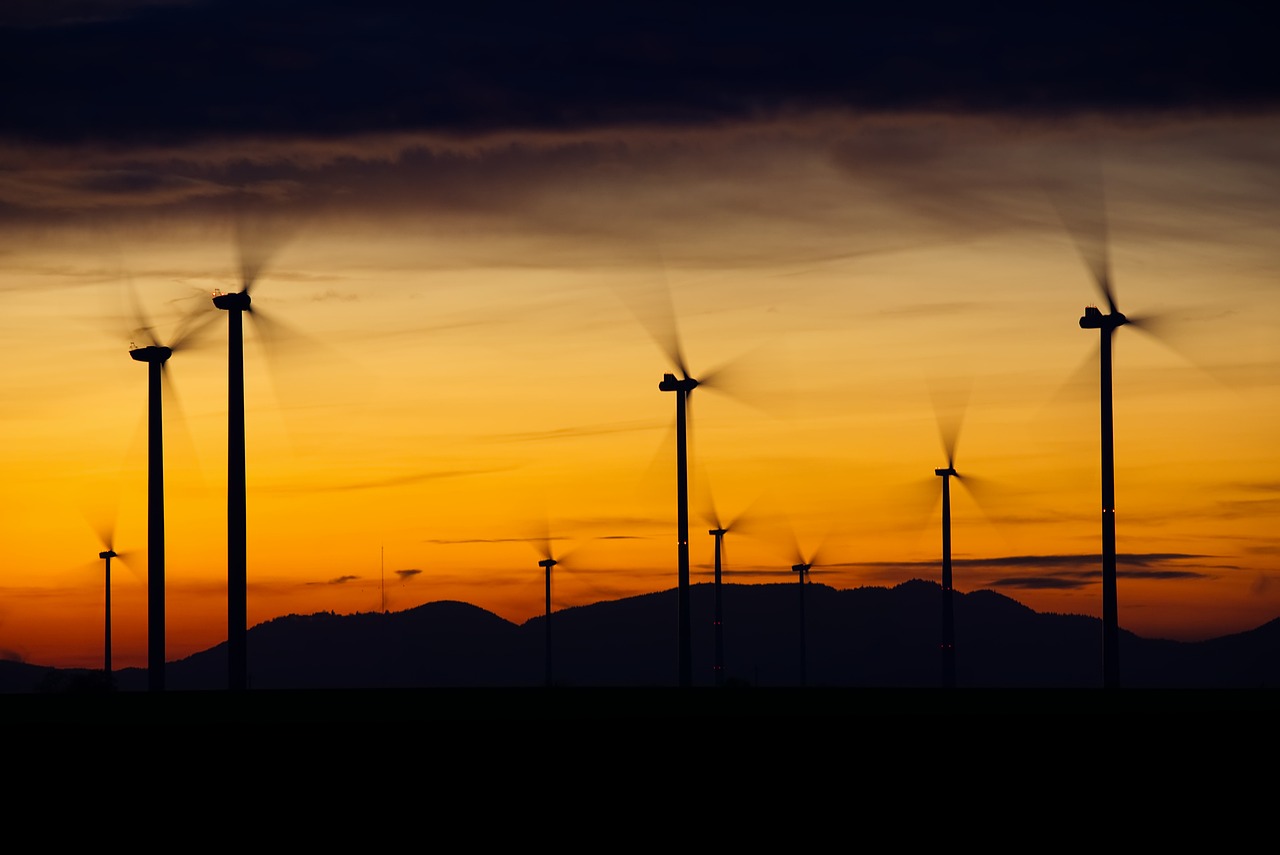
Understanding Offshore Wind Energy
Offshore wind energy is a fascinating and rapidly evolving sector that taps into the power of the wind as it blows over oceans and large lakes. Imagine standing on a beach, feeling the refreshing breeze against your face—now picture harnessing that very energy to power homes and businesses. Offshore wind farms consist of large turbines positioned in bodies of water, where the wind is typically stronger and more consistent than on land. This technology is not just a trend; it’s a significant step towards a sustainable energy future.
One of the primary differences between offshore and onshore wind energy lies in their location. While onshore wind farms are often limited by land availability and zoning laws, offshore sites can be placed in vast expanses of water, allowing for larger installations. The turbines used in these offshore farms are engineered to withstand the harsh marine environment, ensuring durability and longevity. The sheer scale of these installations is awe-inspiring, with some farms consisting of hundreds of turbines spread over miles of ocean.
To truly grasp the potential of offshore wind energy, it’s essential to understand the technology behind it. Offshore wind turbines are typically larger than their onshore counterparts, often standing over 600 feet tall, with blades that can span over 200 feet. This size allows them to capture more wind and generate significantly more electricity. For instance, a single offshore wind turbine can produce enough energy to power thousands of homes. The following table illustrates the differences in capacity between onshore and offshore wind turbines:
| Type of Wind Turbine | Average Height | Average Capacity (MW) | Typical Number of Homes Powered |
|---|---|---|---|
| Onshore | 300-400 feet | 2-3 MW | 500-1,000 |
| Offshore | 400-600 feet | 6-10 MW | 2,000-5,000 |
Moreover, the advantages of offshore wind energy extend beyond just the amount of energy produced. The **location** of these farms means they can be built further away from urban areas, reducing land use conflicts and allowing for the preservation of natural landscapes. This is particularly important as communities strive to balance development with environmental conservation. It’s also worth noting that offshore wind farms can be integrated with other renewable energy sources, creating a more robust and resilient energy grid.
In summary, understanding offshore wind energy is about recognizing its potential to transform our energy landscape. As we face the pressing challenge of climate change, the shift towards renewable energy sources like offshore wind is not just beneficial, it’s essential. With continued advancements in technology and growing investments in this sector, offshore wind energy stands poised to play a pivotal role in our transition to a cleaner, more sustainable future.
- What are offshore wind farms? Offshore wind farms are installations of wind turbines located in bodies of water, designed to generate electricity from wind energy.
- How do offshore wind farms differ from onshore wind farms? Offshore wind farms are typically larger and can harness stronger and more consistent winds, while onshore farms are limited by land availability and zoning regulations.
- What are the environmental impacts of offshore wind farms? Offshore wind farms can significantly reduce greenhouse gas emissions but may also affect marine wildlife, which requires careful planning and mitigation strategies.
- Are offshore wind farms economically viable? Yes, while the initial investment can be high, the long-term benefits, including job creation and sustainable energy production, can outweigh the costs.
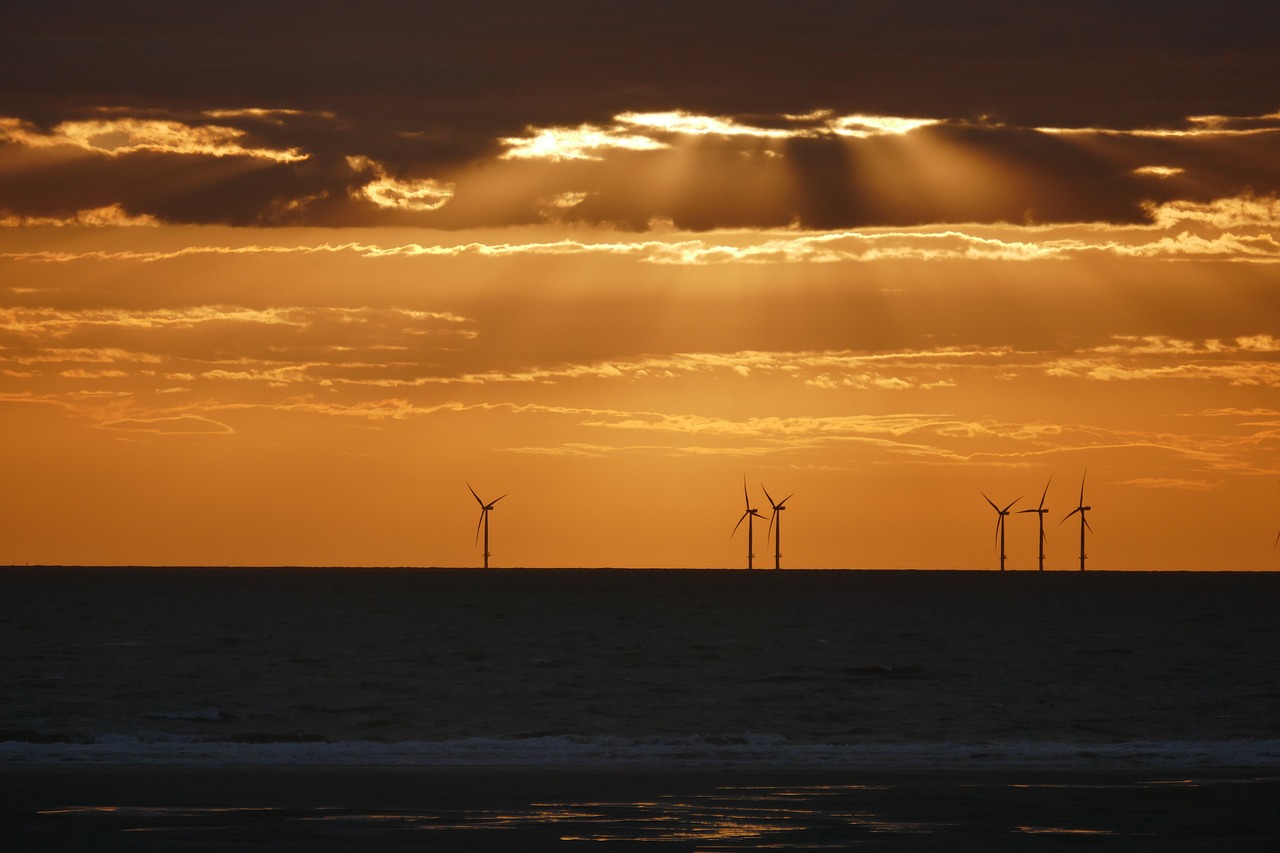
Benefits of Offshore Wind Farms
Offshore wind farms are not just a fleeting trend in the renewable energy landscape; they represent a significant leap towards a more sustainable future. These massive structures, often towering above the waves, harness the power of the wind in ways that onshore farms simply cannot match. One of the most compelling benefits of offshore wind energy is the **higher wind speeds** available over open water. Unlike land, where hills and trees can disrupt airflow, the ocean provides a consistent and powerful wind source, translating to **greater energy production** and efficiency.
Furthermore, the installation of offshore wind farms minimizes **land use conflicts**. As urban areas expand, finding suitable land for wind farms becomes increasingly challenging. Offshore installations alleviate this pressure, allowing for the continued development of urban spaces while simultaneously tapping into renewable energy sources. This approach not only conserves valuable land but also supports local economies by creating jobs in construction, maintenance, and operation.
Perhaps one of the most pressing issues we face today is climate change, and offshore wind farms play a crucial role in mitigating its effects. By generating clean energy, these farms significantly contribute to the reduction of **greenhouse gas emissions**. In fact, a single offshore wind farm can offset thousands of tons of carbon dioxide each year, making a substantial impact on our global carbon footprint. The transition to renewable energy sources like offshore wind is not just beneficial; it's essential for the health of our planet.
When discussing the benefits of offshore wind farms, it's impossible to overlook their **positive environmental impacts**. These facilities are designed to operate with minimal disruption to marine ecosystems. By providing clean energy, they help combat climate change, which is one of the most significant threats to biodiversity. Moreover, the construction of these farms often includes measures to preserve local marine habitats, ensuring that energy generation does not come at the expense of our oceans.
However, it’s essential to approach this topic with caution. Concerns about how offshore wind farms affect marine wildlife are valid and should be addressed. Studies have shown that while some species may be impacted during the construction phase, many adapt to the presence of wind turbines over time. Mitigation strategies such as careful site selection and ongoing environmental monitoring are crucial to ensure that these projects coexist harmoniously with local ecosystems. By prioritizing wildlife protection, we can harness wind energy while safeguarding our natural heritage.
Another aspect to consider is the **noise and aesthetic issues** associated with offshore wind farms. While the sound of turning blades is less intrusive than other forms of energy generation, public perception can vary. Some communities express concerns about the visual impact of these structures on the horizon. Engaging with local communities and incorporating their feedback into project planning can help address these concerns. Innovative designs and strategic placement can minimize visual disruption, allowing us to enjoy the benefits of clean energy without compromising our scenic coastlines.
In summary, the benefits of offshore wind farms are multifaceted and significant. They offer a sustainable solution to our energy needs while promoting environmental health and economic growth. As we continue to innovate and expand this technology, the potential for offshore wind energy remains immense, paving the way for a greener, more sustainable future.
- What are offshore wind farms? Offshore wind farms are installations that generate electricity by harnessing wind energy over bodies of water.
- How do offshore wind farms benefit the environment? They reduce greenhouse gas emissions, help combat climate change, and can be designed to coexist with marine ecosystems.
- What are the economic benefits of offshore wind farms? Offshore wind farms create jobs, stimulate local economies, and can provide long-term financial benefits through energy production.
- Are offshore wind farms noisy? While they produce some noise, it is generally less intrusive than other energy generation methods, and their placement can be managed to minimize impact.
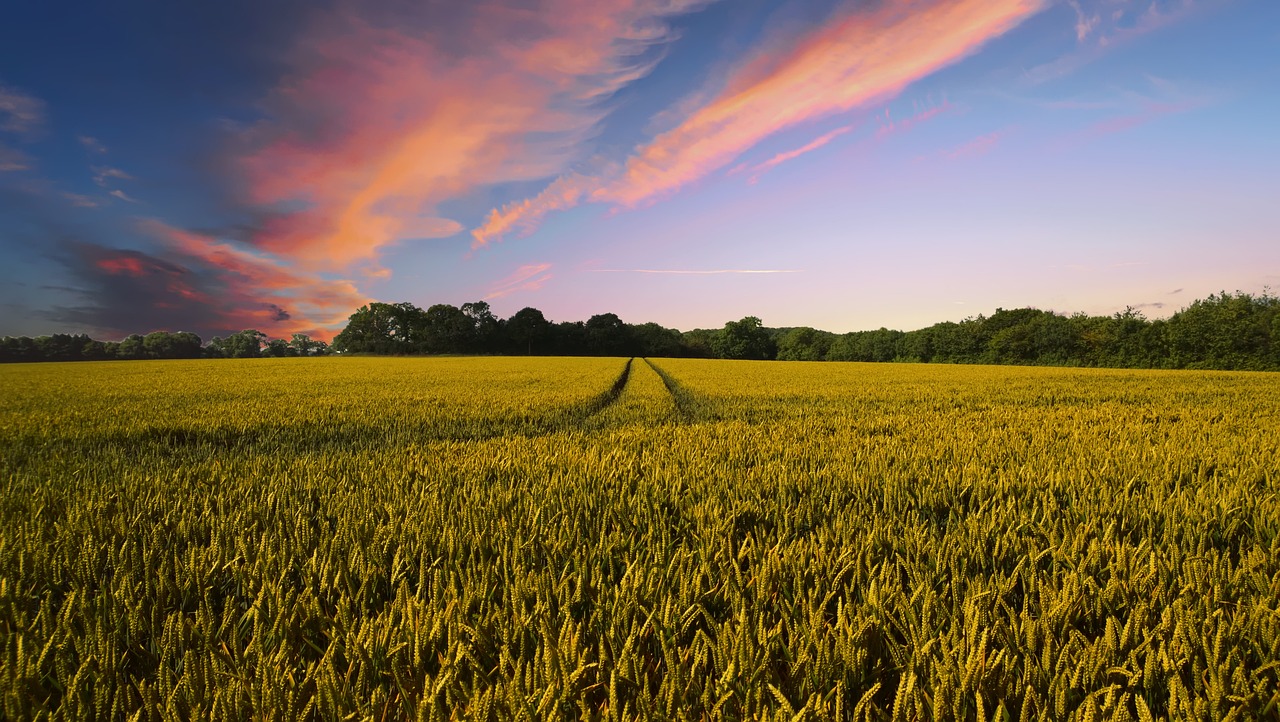
Environmental Impact
Offshore wind farms are not just a technological marvel; they represent a significant shift towards sustainable energy solutions that can positively influence our planet. One of the most compelling aspects of these farms is their ability to reduce carbon emissions dramatically. By harnessing the power of the wind, these installations can generate clean electricity without the harmful byproducts associated with fossil fuels. This transition is crucial in the fight against climate change, as the energy sector is one of the largest contributors to greenhouse gas emissions.
Moreover, offshore wind farms can contribute to a healthier marine ecosystem. Unlike traditional energy sources that may disturb land habitats, offshore wind installations are often placed in areas that are less disruptive to terrestrial wildlife. The water acts as a natural barrier, allowing for energy generation without the extensive land use that can lead to habitat destruction. This strategic placement not only preserves land ecosystems but also minimizes the visual impact on coastal communities.
However, the environmental benefits of offshore wind farms extend beyond just carbon reduction. They can also play a role in preserving marine ecosystems. For instance, the structures of wind turbines can create artificial reefs, providing habitats for various marine species. This can enhance biodiversity in the area, attracting fish and other marine life, which in turn supports local fishing industries. The interaction between wind farms and marine life is a fascinating area of study, showing that renewable energy can coexist with nature.
That said, it's essential to consider the potential challenges associated with offshore wind energy. While the environmental impacts are largely positive, there are concerns regarding the effects on marine wildlife. Birds and bats, for example, may be at risk of collision with turbine blades. To mitigate these risks, developers are increasingly incorporating environmental monitoring systems and adaptive management strategies. This proactive approach is crucial in ensuring that wind energy generation does not come at the expense of local ecosystems.
Additionally, noise pollution is another aspect that needs addressing. The sounds generated by turbines can affect marine mammals that rely on echolocation for navigation and communication. Researchers are actively studying these impacts to develop quieter turbine technologies and operational strategies that minimize disturbances. Public perception also plays a vital role in the acceptance of offshore wind farms. Many communities express concern over the visual impact of turbines on the horizon. Engaging with local populations and addressing their concerns can help foster a more supportive attitude towards these renewable energy projects.
In summary, the environmental impact of offshore wind farms is a complex interplay of benefits and challenges. While they offer substantial advantages in reducing greenhouse gas emissions and promoting marine biodiversity, it is crucial to address the potential risks to wildlife and local communities. As technology advances and more research is conducted, the hope is to find a balance that maximizes the benefits of offshore wind energy while minimizing its drawbacks.
- What are the main environmental benefits of offshore wind farms?
Offshore wind farms help reduce carbon emissions, promote marine biodiversity, and utilize less land compared to traditional energy sources. - How do offshore wind farms affect marine wildlife?
While they can create habitats for some species, concerns exist about collisions with turbines and noise pollution affecting marine mammals. - What measures are taken to mitigate environmental impacts?
Developers employ environmental monitoring systems and adaptive management strategies to minimize risks to wildlife. - Are offshore wind farms visually disruptive?
Public perception varies, but many communities express concerns about the visual impact of turbines on coastal landscapes.
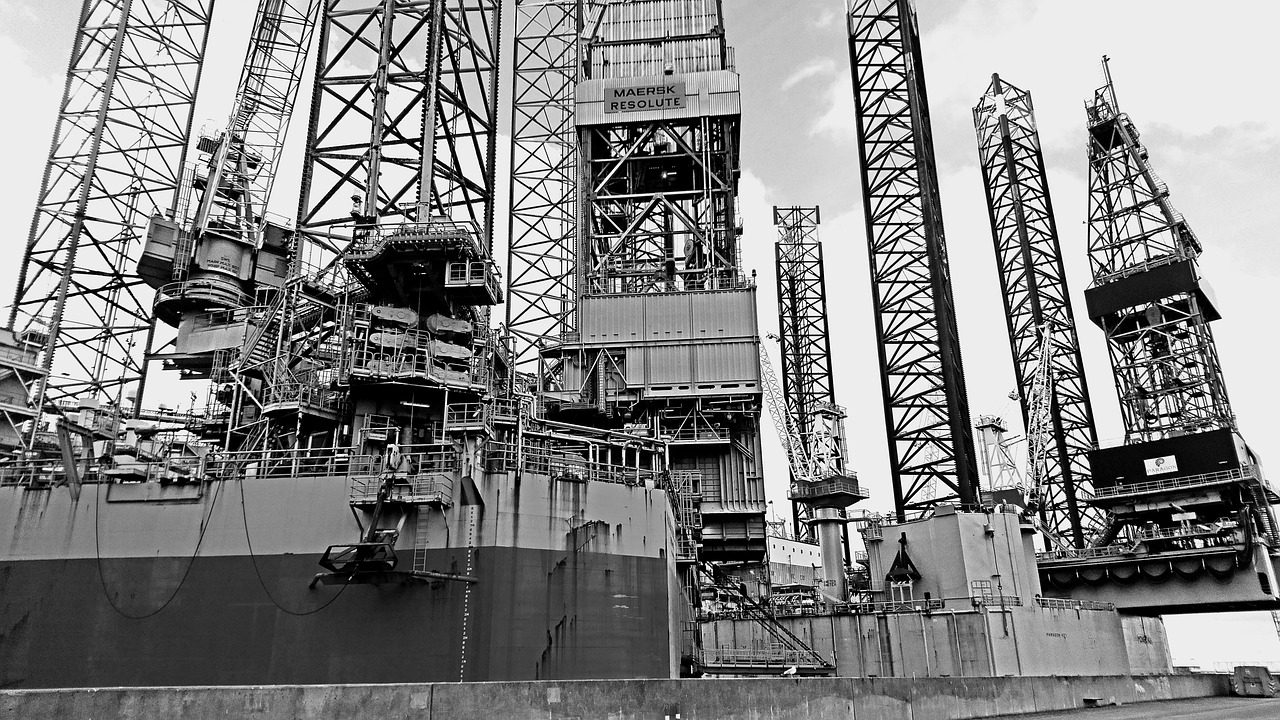
Wildlife Considerations
When we think about the incredible potential of offshore wind farms, it's crucial to also consider their impact on marine wildlife. Just like we wouldn't want to build a bustling city in the middle of a forest without thinking about the animals that live there, we must approach offshore wind energy with a similar mindset. The construction and operation of these wind farms can disrupt local ecosystems, affecting everything from fish populations to migratory bird patterns.
Marine life is particularly sensitive to changes in their environment. For instance, the noise generated during the construction phase can disturb the natural behaviors of marine mammals, such as whales and dolphins, which rely on sound for communication and navigation. Moreover, the physical presence of wind turbines can alter habitats, potentially leading to changes in species distribution. It's a bit like throwing a rock into a calm pond — the ripples can reach far beyond the initial splash.
However, it’s not all doom and gloom! There are several strategies that developers and environmentalists are implementing to mitigate these impacts:
- Environmental Impact Assessments (EIAs): Before any project begins, thorough assessments are conducted to understand the potential impacts on local wildlife.
- Monitoring Programs: Ongoing research and monitoring help track the effects of wind farms on marine ecosystems, allowing for timely adjustments to minimize harm.
- Strategic Placement: By carefully selecting locations that are less critical for wildlife, developers can reduce negative impacts significantly.
Additionally, some studies suggest that offshore wind farms can actually benefit certain marine species. The structures can create artificial reefs, providing new habitats for fish and other marine organisms. This duality — the potential for both harm and benefit — is a delicate balance that requires careful management and ongoing research.
As we move towards a more sustainable energy future, it’s essential to keep wildlife considerations at the forefront of our planning. By prioritizing ecological health alongside energy production, we can work towards solutions that are not only sustainable but also harmonious with our planet's diverse ecosystems.
Q: What measures are taken to protect wildlife during the construction of offshore wind farms?
A: Developers conduct Environmental Impact Assessments (EIAs) and implement monitoring programs to minimize disturbances to marine life during construction.
Q: Do offshore wind farms affect migratory birds?
A: Yes, offshore wind farms can impact migratory bird patterns. However, strategic placement and ongoing research help mitigate these effects.
Q: Can offshore wind farms benefit marine ecosystems?
A: Yes, the structures can create artificial reefs that provide new habitats for various marine species, potentially enhancing local biodiversity.

Noise and Aesthetic Issues
When it comes to offshore wind farms, one of the most talked-about concerns is the noise pollution they generate. Imagine standing on a beach, the sound of waves crashing, and suddenly, a low hum interrupts the serene atmosphere. That's how some people feel when they think about the noise produced by wind turbines. While the sound levels are generally lower than those of onshore turbines, the perception of noise can still be a significant issue for nearby coastal communities. The challenge lies in balancing the need for clean energy with the quality of life for residents who might be affected.
Moreover, aesthetics play a crucial role in the public's acceptance of offshore wind farms. For many, the sight of towering turbines on the horizon can be a deal-breaker. Picture a beautiful sunset over the ocean, and then envision a row of massive wind turbines silhouetted against that backdrop. This visual impact can evoke mixed feelings. Some people appreciate the modernity and innovation that these structures represent, while others see them as an eyesore that disrupts the natural beauty of coastal landscapes.
To address these concerns, developers and policymakers are increasingly focusing on community engagement. They are organizing informational sessions to educate the public about the benefits of offshore wind energy, including its role in combating climate change and reducing reliance on fossil fuels. Furthermore, they are exploring innovative designs and colors for turbines that blend better with the marine environment, aiming to mitigate aesthetic concerns. The goal is to create a dialogue that allows for a better understanding of how these energy solutions can coexist with the beauty of nature.
In addition, advancements in technology are helping to minimize both noise and visual impacts. For instance, newer turbine designs are engineered to operate more quietly, and some projects are looking into placing turbines further offshore, where they are less visible and audible to coastal communities. This approach not only reduces the aesthetic footprint but also ensures that the energy generated is harnessed efficiently.
Ultimately, addressing noise and aesthetic issues is about finding a compromise that respects the environment and the communities involved. As we continue to push for renewable energy solutions, it’s essential to keep these discussions open and ongoing. After all, the transition to greener energy sources should be a shared journey, one that takes into account the voices and concerns of all stakeholders.
- How noisy are offshore wind farms compared to onshore ones? Offshore wind farms generally produce less noise than onshore turbines due to the distance from populated areas and advancements in turbine design.
- What measures are taken to address aesthetic concerns? Developers often engage with local communities and explore turbine designs that are less visually intrusive, as well as positioning turbines further offshore.
- Can offshore wind farms impact marine wildlife? Yes, but measures are put in place to minimize these impacts, including careful site selection and monitoring of marine ecosystems.
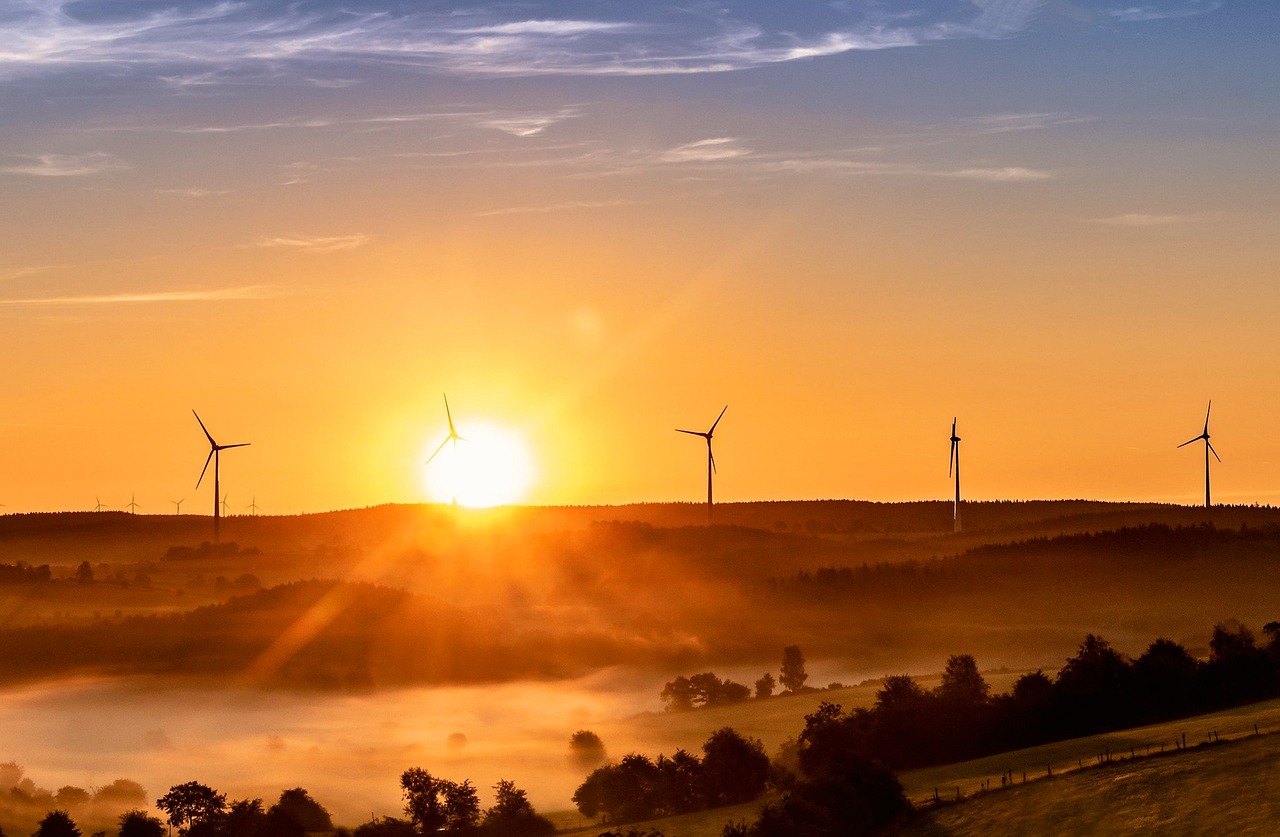
Economic Viability
The of offshore wind farms is a critical factor in their adoption as a mainstream energy source. With initial investment costs often soaring into the billions, one might wonder if the long-term benefits truly outweigh these upfront expenses. Fortunately, the answer leans heavily towards a resounding yes! As countries pivot towards renewable energy, the economic landscape for offshore wind is becoming increasingly favorable.
To begin with, the initial investment in offshore wind farms can be daunting. However, it’s essential to consider the long-term financial benefits they bring. These facilities not only generate clean energy but also create a multitude of jobs in construction, maintenance, and operation. According to recent studies, each megawatt of offshore wind capacity can create approximately 3.5 jobs during the construction phase and 0.5 jobs for ongoing operations. This translates to significant employment opportunities in coastal regions.
Moreover, the cost of offshore wind energy has seen a dramatic decline over the past decade. In fact, the levelized cost of energy (LCOE) for offshore wind has dropped by more than 50% since 2010, making it one of the most competitive renewable energy sources available today. This reduction is largely attributed to advancements in technology, economies of scale, and increased competition among developers. As a result, offshore wind energy is now cheaper than many fossil fuel alternatives, proving that investing in clean energy is not just an environmental imperative, but also an economic one.
Another crucial aspect to consider is the long-term financial stability that offshore wind farms can provide. Once operational, these facilities have low maintenance costs and can generate consistent revenue streams over their lifespan, which typically spans 20 to 25 years. This reliability is a boon for investors and governments alike, as it allows for better financial planning and resource allocation.
Furthermore, offshore wind farms contribute to energy independence and security. By harnessing local wind resources, countries can reduce their reliance on imported fossil fuels, which can be subject to volatile market fluctuations. This not only stabilizes energy prices but also enhances national security by reducing vulnerability to geopolitical tensions.
In summary, the economic viability of offshore wind farms is bolstered by several factors:
- Job Creation: Significant employment opportunities in construction and maintenance.
- Cost Efficiency: Declining costs make offshore wind competitive with fossil fuels.
- Long-term Revenue: Stable income over decades from energy production.
- Energy Independence: Reduces reliance on imported fuels and enhances security.
As we look to the future, it’s clear that offshore wind farms are not just a fleeting trend but a robust investment in our planet's sustainable energy future. With continued technological advancements and supportive policy frameworks, the economic case for offshore wind will only strengthen, paving the way for a cleaner, greener tomorrow.
Q1: What are the main costs associated with offshore wind farms?
A1: The main costs include initial capital investment for construction, operation and maintenance expenses, and costs related to grid connection and energy storage solutions.
Q2: How many jobs can offshore wind farms create?
A2: Offshore wind farms can create approximately 3.5 jobs per megawatt during construction and 0.5 jobs for ongoing operations.
Q3: What is the lifespan of an offshore wind farm?
A3: The typical lifespan of an offshore wind farm is around 20 to 25 years, during which it can provide a stable source of energy and revenue.
Q4: How do offshore wind farms contribute to energy independence?
A4: By utilizing local wind resources, offshore wind farms reduce the reliance on imported fossil fuels, thereby stabilizing energy prices and enhancing national security.
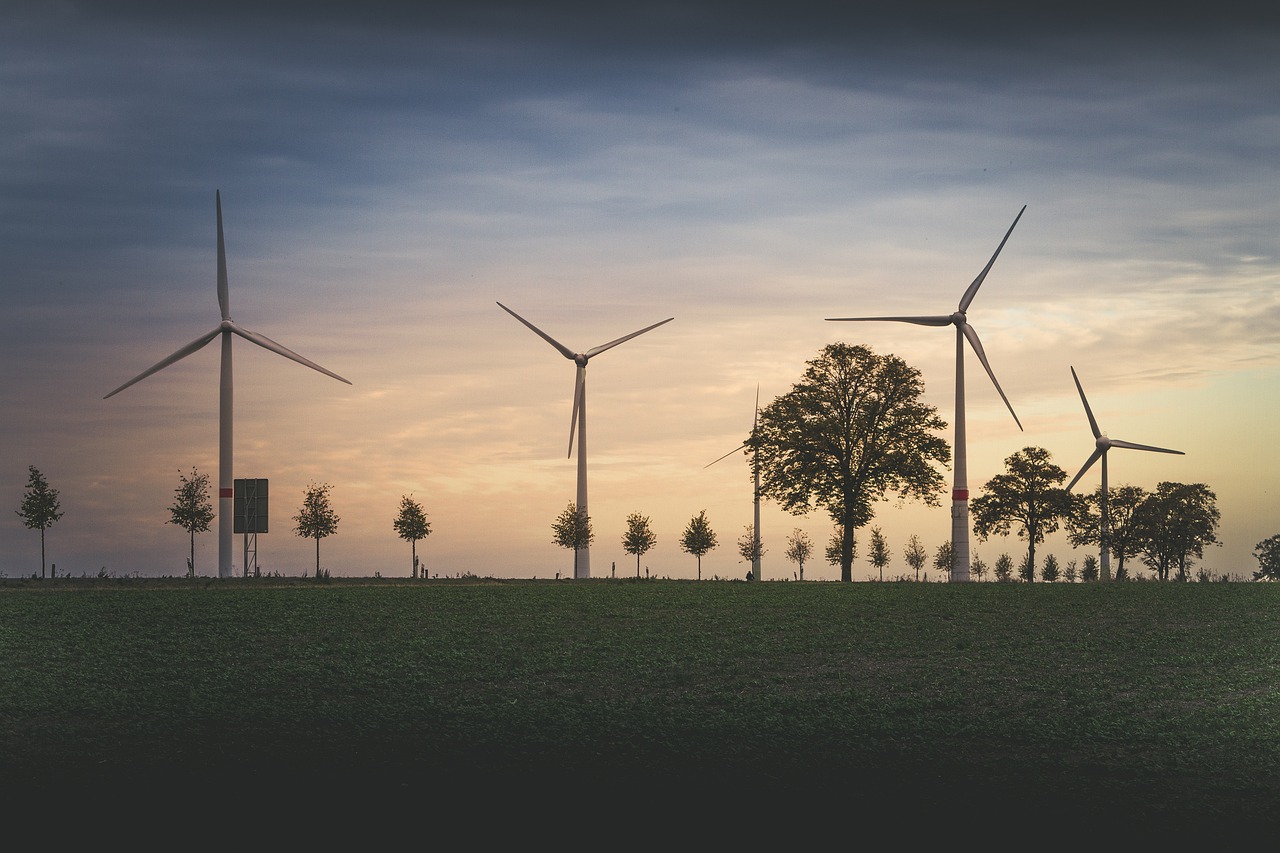
Technological Innovations
In the ever-evolving landscape of renewable energy, are the driving force behind the growth and efficiency of offshore wind farms. One of the most exciting advancements is the development of floating wind turbines, which are transforming how we harness wind energy over water. Unlike traditional fixed-bottom turbines, floating turbines can be anchored in deeper waters, where wind speeds are typically higher and more consistent. This opens up vast areas of ocean that were previously inaccessible for wind energy generation, significantly expanding the potential for clean energy production.
Another major innovation is the integration of energy storage solutions with offshore wind farms. As wind energy generation can be intermittent, effective storage technologies are essential to ensure a reliable and stable energy supply. Modern solutions such as batteries, pumped hydro storage, and flywheel systems allow for the capture of excess energy produced during high wind periods, which can then be released during calm days. This not only maximizes the efficiency of wind farms but also enhances grid stability, making renewable energy a more viable option for powering homes and industries.
Moreover, advancements in data analytics and predictive maintenance technologies are playing a pivotal role in optimizing the performance of offshore wind farms. By utilizing IoT sensors and machine learning algorithms, operators can monitor turbine health in real-time, predicting potential failures before they occur. This proactive approach reduces downtime and maintenance costs, ensuring that turbines operate at peak efficiency for longer periods. Not to mention, it helps in maximizing energy output, which is crucial for meeting the increasing demand for sustainable energy.
As we look to the future, the role of artificial intelligence (AI) in offshore wind energy cannot be overlooked. AI can enhance site selection processes by analyzing vast amounts of data to identify the best locations for new wind farms. It can also improve energy forecasting, allowing for better grid management and integration of renewable sources. The combination of AI with advanced weather modeling can lead to more accurate predictions of wind patterns, enabling operators to optimize energy production and distribution.
In summary, the technological innovations in offshore wind energy are not just about making existing systems more efficient; they are about redefining what is possible in the realm of renewable energy. The advancements in floating turbines, energy storage, predictive maintenance, and AI are paving the way for a more sustainable future. As these technologies continue to evolve, we can expect offshore wind farms to play an increasingly vital role in our global energy landscape.
- What are floating wind turbines? - Floating wind turbines are offshore wind energy systems that are anchored to the seabed using floating platforms, allowing them to be placed in deeper waters.
- How do energy storage solutions work with offshore wind farms? - Energy storage systems capture excess energy generated during high wind periods and release it during low wind periods, ensuring a stable energy supply.
- What role does AI play in offshore wind energy? - AI enhances site selection, energy forecasting, and predictive maintenance, helping to optimize the performance and reliability of offshore wind farms.
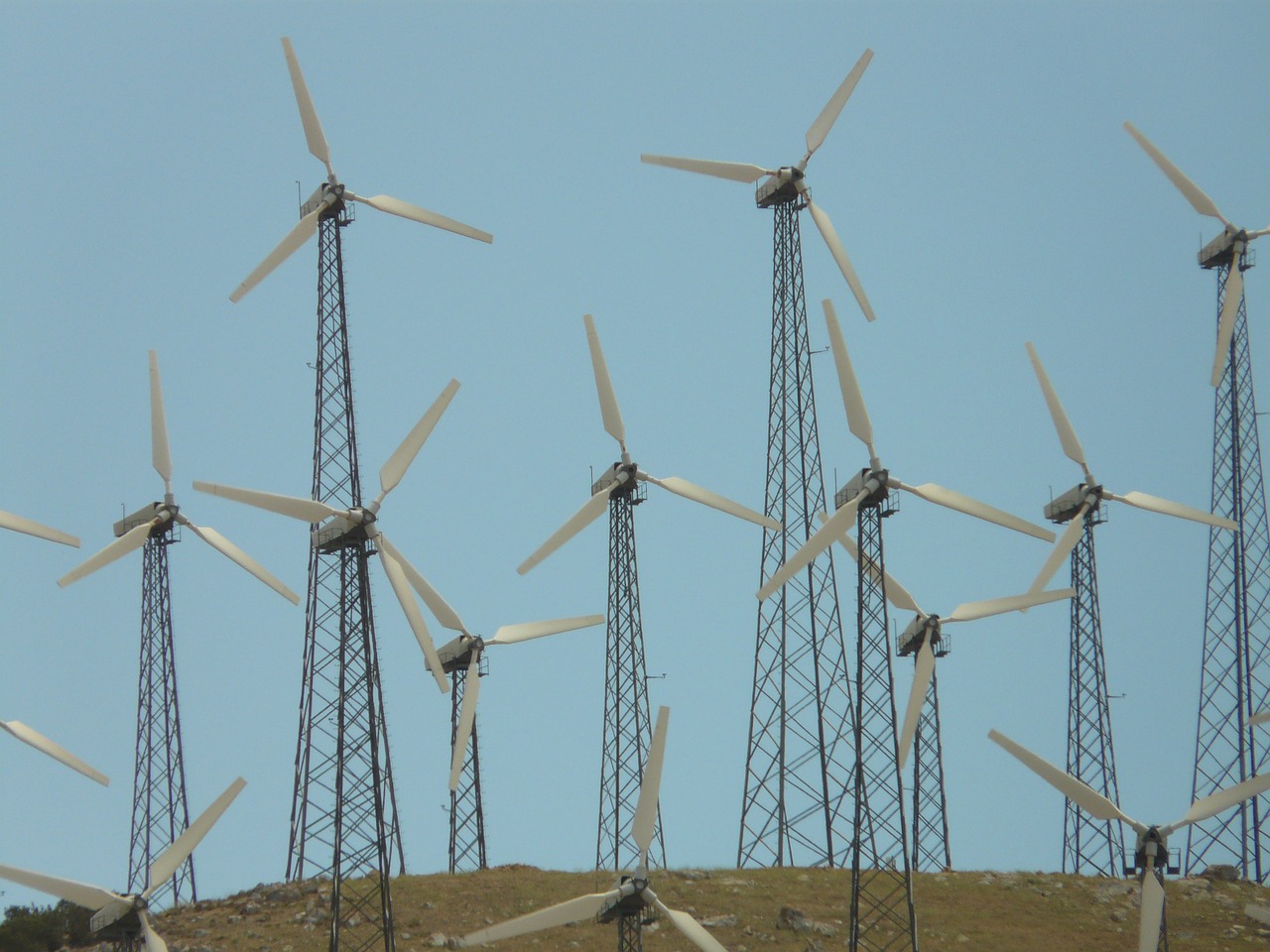
Floating Wind Turbines
Floating wind turbines represent a groundbreaking advancement in the realm of offshore wind energy. Unlike traditional fixed-bottom turbines, these innovative structures can be anchored to the seabed using flexible mooring systems, allowing them to harness wind energy in deeper waters where wind speeds are often higher and more consistent. Imagine being able to set sail into the open ocean, where the winds are strong and steady, rather than being confined to the shallows near the coast. This freedom not only expands the potential locations for wind farms but also opens up new avenues for renewable energy generation.
One of the most exciting aspects of floating wind turbines is their ability to operate in locations previously deemed unsuitable for wind energy. As coastal areas become increasingly saturated with wind farms, floating technology allows us to tap into the vast, untapped potential of deeper ocean waters. This means that countries with extensive coastlines can significantly increase their renewable energy production without encroaching on valuable land resources. The technology is akin to taking a leap into the deep end of a pool—it's bold and a bit daunting, but the rewards can be tremendous.
Floating wind turbines are designed to withstand harsh marine environments. They are built with advanced materials and engineering techniques that ensure stability and durability even in turbulent waters. For instance, the use of concrete and steel in their construction enhances their resilience against strong waves and storms. Moreover, these turbines can be assembled and towed to their installation sites, which simplifies the deployment process and reduces costs associated with construction. In essence, it's like building a ship in a harbor and then sailing it out to sea, rather than trying to construct it in the rough waters themselves.
As the technology continues to evolve, several countries are leading the charge in floating wind turbine projects. For example, Scotland has made significant strides with its Hywind project, which showcases the feasibility and efficiency of floating wind farms. This pioneering project serves as a model for others looking to harness offshore wind energy. The success of such initiatives is crucial as they provide valuable data and insights that can help refine the technology and reduce costs further.
To give you a clearer picture, here’s a comparison of traditional fixed-bottom turbines versus floating wind turbines:
| Feature | Fixed-Bottom Turbines | Floating Wind Turbines |
|---|---|---|
| Installation Depth | Shallow waters (up to 60 meters) | Deep waters (over 60 meters) |
| Mobility | Stationary | Can be towed to site |
| Cost of Installation | Higher due to seabed preparation | Lower due to simpler assembly |
| Wind Energy Potential | Limited by coastal proximity | Higher due to access to open ocean winds |
In conclusion, floating wind turbines are not just a technological curiosity; they are a vital component of the future of renewable energy. They promise to unlock the vast potential of offshore wind resources while minimizing conflicts with land use. As we strive for a more sustainable future, embracing these innovations will be crucial. The ocean is calling, and with floating wind turbines, we can answer that call with clean, renewable energy that can power our homes, industries, and communities for generations to come.
- What are floating wind turbines? - Floating wind turbines are offshore wind energy systems that are anchored to the seabed using flexible mooring systems, allowing them to operate in deeper waters.
- How do floating wind turbines differ from traditional turbines? - Unlike traditional turbines that are fixed to the seabed in shallow waters, floating turbines can be deployed in deeper waters where wind speeds are often higher.
- What are the benefits of floating wind turbines? - They expand the potential for wind energy generation, reduce land use conflicts, and can be deployed in areas with stronger winds.
- Are floating wind turbines environmentally friendly? - Yes, they contribute to reducing greenhouse gas emissions and can be designed to minimize impacts on marine ecosystems.
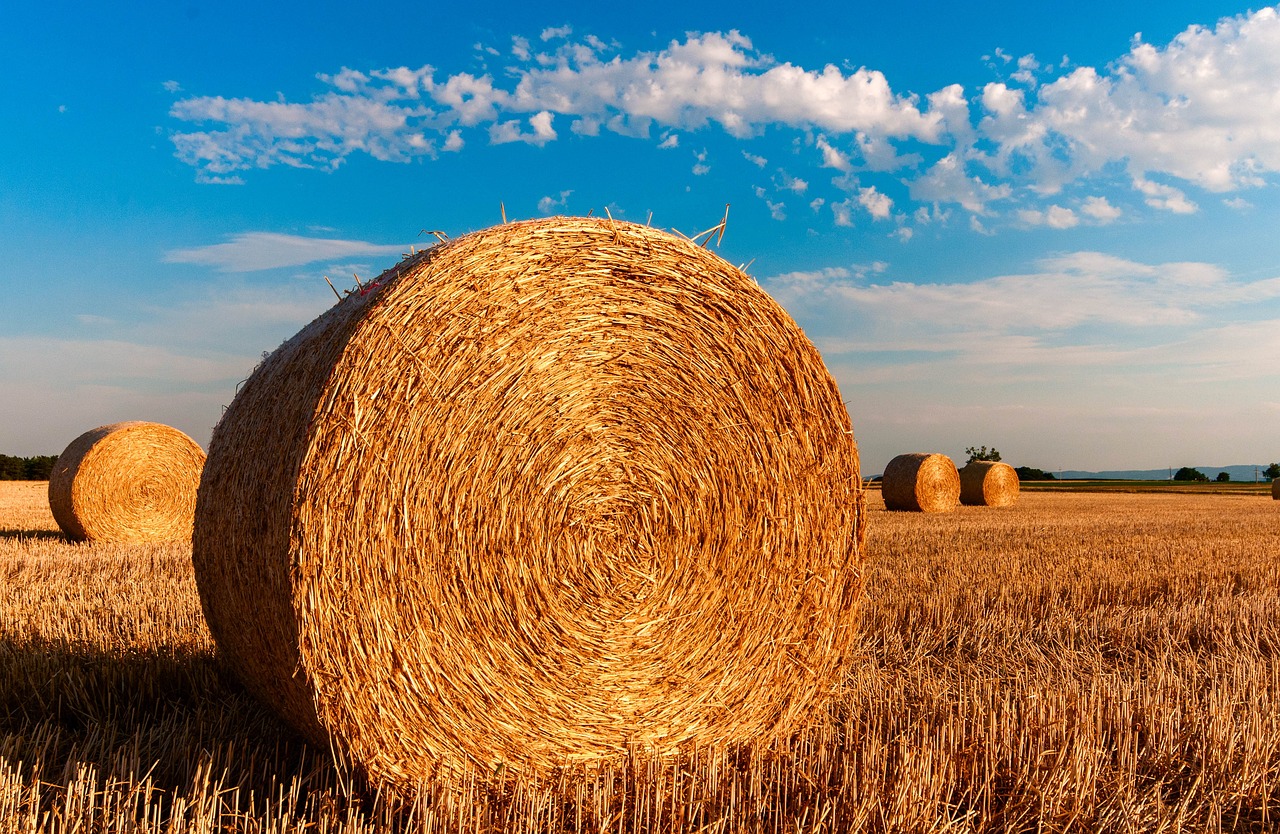
Energy Storage Solutions
When it comes to maximizing the efficiency of offshore wind farms, play an indispensable role. Think of these systems as the batteries of our energy ecosystem, capturing and holding onto the wind energy generated during those blustery days, so we can use it even when the winds die down. This is crucial because, unlike fossil fuels, wind energy isn't always available on demand. Therefore, integrating robust energy storage technologies is essential for creating a reliable and resilient energy supply.
One of the most promising technologies in this arena is lithium-ion batteries. These batteries are already widely used in electric vehicles and consumer electronics, but their application in renewable energy systems is rapidly expanding. They offer high energy density, efficiency, and the ability to discharge energy quickly, making them ideal for balancing supply and demand. However, the challenge remains in their lifecycle and environmental impact, which necessitates ongoing innovation.
Another exciting development is the use of pumped hydro storage. This method involves pumping water to a higher elevation during periods of excess energy generation and releasing it to generate electricity when demand is high. It's like a giant water battery, and while it has been around for decades, its scalability makes it a reliable option for offshore wind farms located near coastal areas.
Furthermore, compressed air energy storage (CAES) is gaining traction as a viable solution. In this system, air is compressed and stored in underground caverns or tanks. When energy is needed, the compressed air is heated and expanded to drive a turbine. This technology is particularly appealing because it can store large amounts of energy for extended periods, making it a perfect complement to the intermittent nature of wind energy.
To illustrate the various energy storage solutions available, consider the following table:
| Energy Storage Technology | Advantages | Challenges |
|---|---|---|
| Lithium-ion Batteries | High efficiency, quick discharge, widely available | Environmental concerns, limited lifespan |
| Pumped Hydro Storage | Large capacity, proven technology | Geographical limitations, high initial investment |
| Compressed Air Energy Storage | Long-duration storage, large capacity | Infrastructure challenges, energy losses during compression |
As we look to the future, the integration of smart grid technology with these storage solutions is a game changer. By utilizing advanced software and communication technologies, we can optimize energy distribution and consumption, ensuring that we harness every bit of energy generated by offshore wind farms. This synergy not only enhances the efficiency of energy usage but also contributes to a more sustainable and resilient energy system.
In conclusion, energy storage solutions are not just an add-on to offshore wind farms; they are a vital component of the renewable energy landscape. By investing in and developing these technologies, we can ensure that the energy harnessed from the wind translates into a stable and reliable power supply for communities, paving the way for a greener and more sustainable future.
- What are the main types of energy storage solutions for offshore wind farms? The main types include lithium-ion batteries, pumped hydro storage, and compressed air energy storage.
- How do energy storage solutions improve the efficiency of offshore wind farms? They store excess energy generated during high wind periods and release it when the demand is high, ensuring a consistent energy supply.
- Are there any environmental concerns associated with energy storage technologies? Yes, particularly with lithium-ion batteries, which have lifecycle and disposal issues that need to be addressed.
- What role does smart grid technology play in energy storage? Smart grids optimize the distribution and consumption of energy, enhancing the overall efficiency and reliability of the system.
Frequently Asked Questions
- What are offshore wind farms?
Offshore wind farms are facilities that generate electricity by harnessing wind energy from turbines located in bodies of water, typically oceans or large lakes. They take advantage of stronger and more consistent winds found offshore compared to onshore locations.
- How do offshore wind farms differ from onshore wind farms?
The primary difference lies in their location. Offshore wind farms benefit from higher wind speeds and less turbulence, leading to greater energy production. Additionally, they reduce land use conflicts and can be built in areas where onshore development is not feasible.
- What are the environmental benefits of offshore wind farms?
Offshore wind farms significantly reduce greenhouse gas emissions by providing a clean energy source. They also help in combating climate change and can preserve marine ecosystems when designed and managed properly.
- Are there any concerns about wildlife around offshore wind farms?
Yes, there are concerns regarding the impact on marine wildlife, including fish and bird populations. However, various mitigation strategies are being implemented to minimize these effects, ensuring that energy generation does not harm local ecosystems.
- What are the economic advantages of offshore wind farms?
Offshore wind farms can create numerous jobs during construction and maintenance phases. They also contribute to local economies through investments and can lead to long-term financial benefits for communities and governments through sustainable energy production.
- What technological innovations are shaping the future of offshore wind energy?
Innovations such as floating wind turbines and advanced energy storage solutions are revolutionizing the industry. Floating turbines allow for installations in deeper waters, while energy storage technologies ensure a stable energy supply, maximizing the efficiency of wind energy production.
- How do floating wind turbines work?
Floating wind turbines are anchored to the seabed using mooring lines and can be placed in deeper waters where traditional fixed turbines cannot reach. This technology expands the potential areas for wind energy generation, tapping into previously inaccessible wind resources.
- What energy storage solutions are used with offshore wind farms?
Energy storage solutions such as batteries and pumped hydro storage are utilized to store excess energy generated during peak wind periods. This stored energy can then be released during low wind conditions, ensuring a continuous and stable power supply.



















